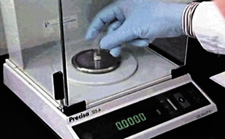Advertisement
Grab your lab coat. Let's get started
Welcome!
Welcome!
Create an account below to get 6 C&EN articles per month, receive newsletters and more - all free.
It seems this is your first time logging in online. Please enter the following information to continue.
As an ACS member you automatically get access to this site. All we need is few more details to create your reading experience.
Not you? Sign in with a different account.
Not you? Sign in with a different account.
ERROR 1
ERROR 1
ERROR 2
ERROR 2
ERROR 2
ERROR 2
ERROR 2
Password and Confirm password must match.
If you have an ACS member number, please enter it here so we can link this account to your membership. (optional)
ERROR 2
ACS values your privacy. By submitting your information, you are gaining access to C&EN and subscribing to our weekly newsletter. We use the information you provide to make your reading experience better, and we will never sell your data to third party members.
Physical Chemistry
Digital Briefs
New software and websites for the chemical enterprise
by Noah U. Shussett
January 14, 2008
| A version of this story appeared in
Volume 86, Issue 2
Software
(1) IdbsChemBook is a research management program to support and simplify the day-to-day work of medicinal and synthetic chemists. Part of the E-WorkBook suite, ChemBook allows chemists to ensure that all research findings are stored securely and completely with any contextual data along with reaction details, Microsoft Office documents, and Web links. The program also features a reaction-drawing tool, stoichiometry calculations, definable structure-rendering options (bond lengths, stereochemistry, aromatic representations, atom colors, and default font size), structure refinement in situ, single and bulk compound registration, parallel synthesis library enumeration, and industry-standard chemistry searching (SSS, exact, similarity, reaction transformation, product/reactant, and more). ChemBook runs on Windows (XP and Vista) and requires an Oracle database and Windows application server. idbs, www.idbs.com

\
Online training in lab skills
e-Learning programs are teaching and training tools for industrial, government, and medical laboratories. The first three modules in a series entitled "Practical Lab Skills" are now available. The programs show close-up demonstrations of many basic techniques commonly practiced in the chemical laboratory. Each module contains four to six short movies on the title subject, totaling about 30 minutes of video. Currently the available topics are "Basic Laboratory Techniques," "Distillation Techniques," and "Volumetric Techniques." The programs are done in an actual lab to show the safe, correct method of carrying out a particular laboratory procedure. A full-screen option allows group display, and the voice-over displayed as text under the picture can be printed. In addition to scored multiple-choice quizzes for assessment, each movie has a section with open-ended questions for pre- or posttest discussion. There is also an extensive glossary of technical terms. The e-Learning programs are offered in both Web-delivered format and on CD and are accessible from a PC or Mac (Flash required). Academy Savant, www.academysavant.com
De Novo Drug Design Suite is a portfolio of tools for virtual de novo drug design and library generation. Consisting of four tools, the suite is versatile and simple to use. The first tool, CoLibri, permits the creation, management, and manipulation of ligand fragments, including the capability to assemble gigantic fragment collections from multiple sources while removing duplicate fragments. Compounds created from CoLibri's fragment spaces can be searched by using the second tool, FTrees-FS, a ligand-based alignment and similarity search engine. Alternatively, a novel structure-based design method, FlexNovo, based on the established docking engine of FlexX, is also part of the suite. Recore, the final tool, replaces user-defined central elements of known bioactive molecules to generate novel scaffolds in 3-D. The software is supported on Linux (other platforms available on request). BioSolveIT, www.biosolveit.com
UN-SCAN-IT v5.2 is an upgrade to a popular software used for digitizing graphs. The new version now automatically converts scanned graphs to (x,y) data through a drag-and-drop interface, colored data-line follower, improved grid-line filters, and a graphical (x,y) data eraser. The software works with any scanner, digital camera, or image-input device, and it can be used to digitize journal graphs, strip-chart output, old graphs, or any other hard-copy graph. The software allows the user to compare and analyze data from graphs that are on different scales; analyze and store hard-copy output in digital (x,y) form on disc; and export data to other spreadsheet, data-analysis, and graphics programs. Other upgrades include the speed to analyze up to 10,000 data points per minute; the memory to store up to 25,000 data points per file; and the flexibility to digitize JPG, TIFF, BMP, GIF, TGA, PICT, PCX, and other image formats. UN-SCAN-IT v5.2 runs on Mac OS X and Windows. Silk Scientific, www.silkscientific.com/home.htm
(2) COSMOmic is a software application that is based on the COSMO-RS theory (which provides novel access to solvation questions) that derives the thermophysical behavior of liquids from quantum mechanical density functional theory calculations. The software describes micelles or biomembranes as liquid layers, and it determines partition coefficients of solutes efficiently and without the need to fit additional parameters. COSMOmic offers applications to analyze and validate partition coefficients, probability distributions, free-energy profiles, neutral and ionic solutes, spherical micelles, and lamellar micelles such as phospholipid biomembranes. Further applications include the determination of permeability coefficients of solutes through membranes and of Flory-Huggins-like parameters that can serve as input for meso-scale applications such as dissipative particle dynamics. COSMOmic runs on Windows (XP and Vista) and Linux. CAChe Research, www.cacheresearch.com/cosmo.html
Noah U. Shussett writes Digital Briefs. Information about new or revised electronic products can be sent to d-briefs@acs.org.






Join the conversation
Contact the reporter
Submit a Letter to the Editor for publication
Engage with us on Twitter